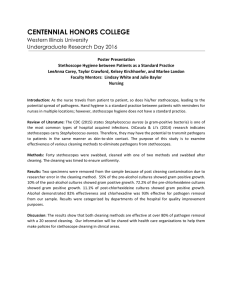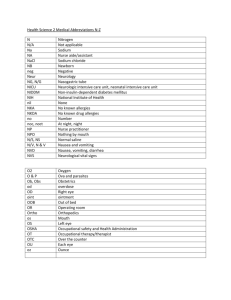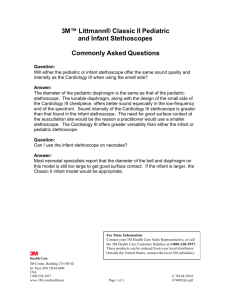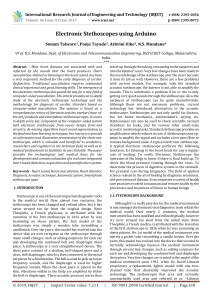Centennial Honors College Western Illinois University Undergraduate Research Day 2014
advertisement
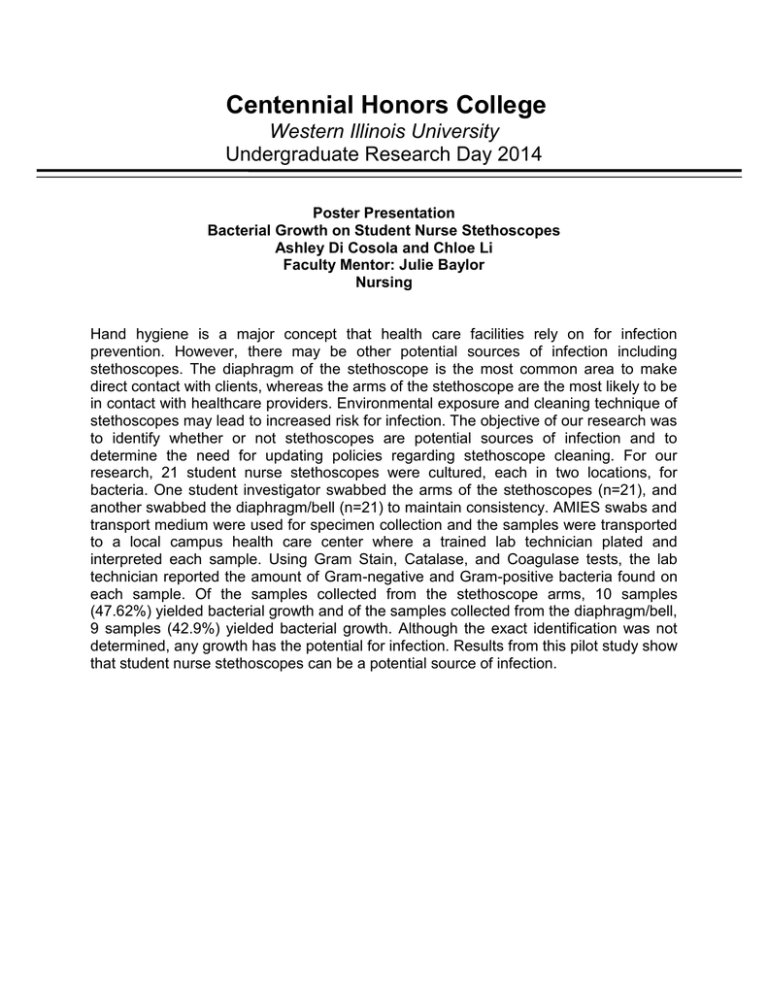
Centennial Honors College Western Illinois University Undergraduate Research Day 2014 Poster Presentation Bacterial Growth on Student Nurse Stethoscopes Ashley Di Cosola and Chloe Li Faculty Mentor: Julie Baylor Nursing Hand hygiene is a major concept that health care facilities rely on for infection prevention. However, there may be other potential sources of infection including stethoscopes. The diaphragm of the stethoscope is the most common area to make direct contact with clients, whereas the arms of the stethoscope are the most likely to be in contact with healthcare providers. Environmental exposure and cleaning technique of stethoscopes may lead to increased risk for infection. The objective of our research was to identify whether or not stethoscopes are potential sources of infection and to determine the need for updating policies regarding stethoscope cleaning. For our research, 21 student nurse stethoscopes were cultured, each in two locations, for bacteria. One student investigator swabbed the arms of the stethoscopes (n=21), and another swabbed the diaphragm/bell (n=21) to maintain consistency. AMIES swabs and transport medium were used for specimen collection and the samples were transported to a local campus health care center where a trained lab technician plated and interpreted each sample. Using Gram Stain, Catalase, and Coagulase tests, the lab technician reported the amount of Gram-negative and Gram-positive bacteria found on each sample. Of the samples collected from the stethoscope arms, 10 samples (47.62%) yielded bacterial growth and of the samples collected from the diaphragm/bell, 9 samples (42.9%) yielded bacterial growth. Although the exact identification was not determined, any growth has the potential for infection. Results from this pilot study show that student nurse stethoscopes can be a potential source of infection.


